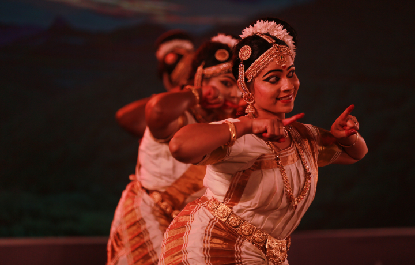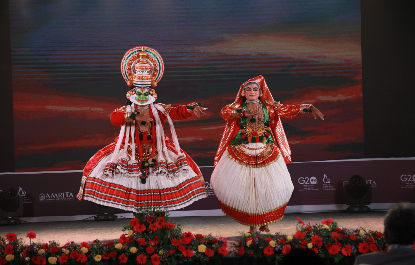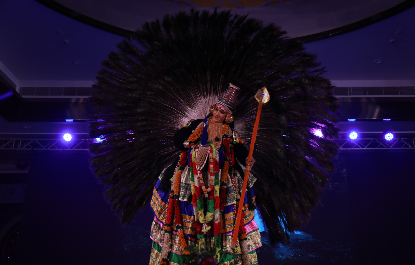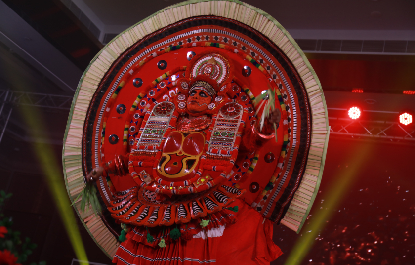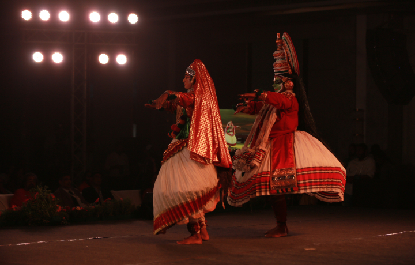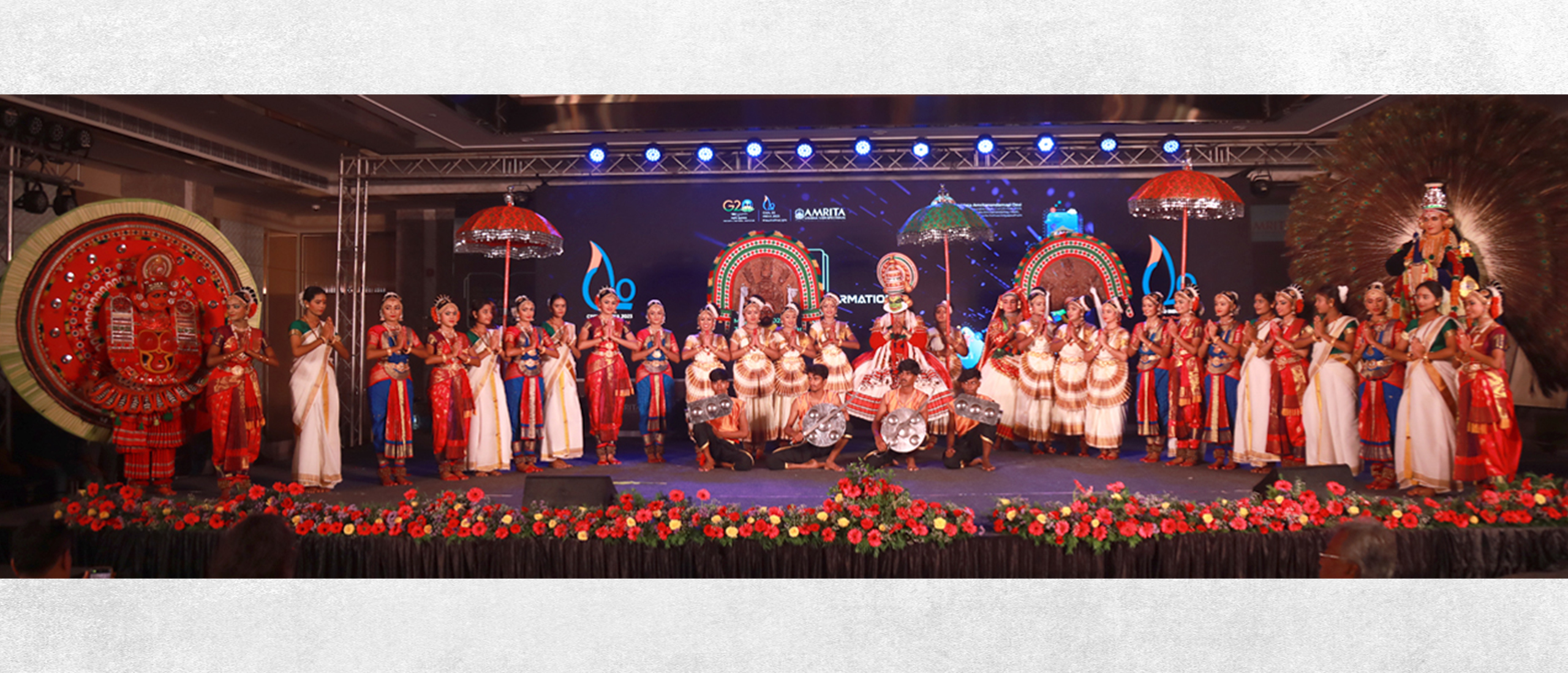The day 1 of the Civil 20 Education and Digital Transformation Summit concluded with a cultural event by the South Zone Cultural Center, Thanjavur, mentored by Kalamandalam Gopalakrishnan. The show showcased a fusion of various dance forms and art forms.
The show commenced with a captivating fusion dance presentation, featuring graceful performers adorned in vibrant attire that symbolized the essence of Mohiniyattam, Bharatanatyam, and Kuchipudi. Their rhythmic movements harmoniously synchronized with the enchanting devotional chant of Loka Samsara.
After the mesmerizing fusion dance, the performance seamlessly transitioned into a captivating display called “Drishya Thaalaman.” It is an enchanting art form that displays unity in diversity through different dance forms. The first dance form showcased was Thiruvathirakali, a captivating group dance performed in honor of Lord Shiva. Next was Mohiniyattam, a graceful dance performed by women as a tribute to the Hindu god Vishnu in his Mohini incarnation.
The enthralling performance carried forward with a magnificent showcase of Bharatanatyam, Kuchipudi, and Kathakali, skillfully incorporating elements from each dance form in a mesmerizing segment known as “Purappad.” The dancers expertly demonstrated the unique characteristics and expressive movements that define these revered art forms. It was followed by the vibrant and energetic martial art form of Kalaripayattu, originating from the South Malabar region.
Adding cultural richness to the event, a unique art form called Thira was showcased. Performers adorned costumes representing Bhootam Shivas and the Thira goddess as they danced, creating a captivating spectacle for the audience to behold.
In the ensuing segment titled “Mayooranritham,” a graceful peacock dance unfolded, showcasing the performer’s skill as they danced while balancing on a supporting stick. This exquisite dance paid homage to the peacock, known as “mayil,” which symbolizes Lord Muruga’s divine vehicle, celebrating their sacred association.
“Theyyam,” an art form native to the northern part of Kerala, was performed next. The performers adorned intriguing costumes and painted red faces, adding a mystifying element to their presentation.
The performance culminated with a grand finale that incorporated elements from all the dance forms showcased earlier. This finale served as a fitting conclusion, bringing together diverse art forms, and showcasing the rich cultural heritage of the region and the final performance was a tribal dance by Beloved Amma’s children from Paripilly.

